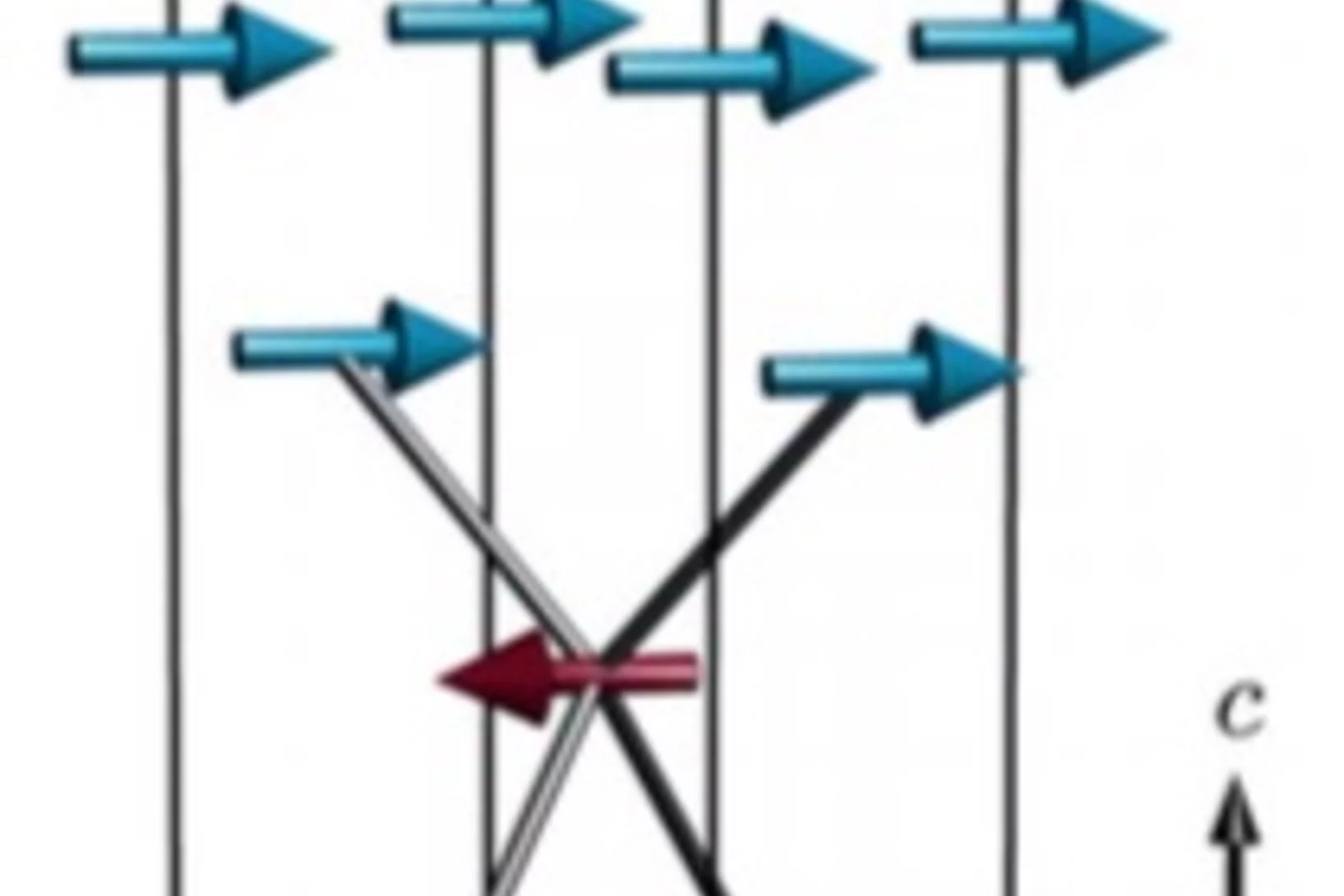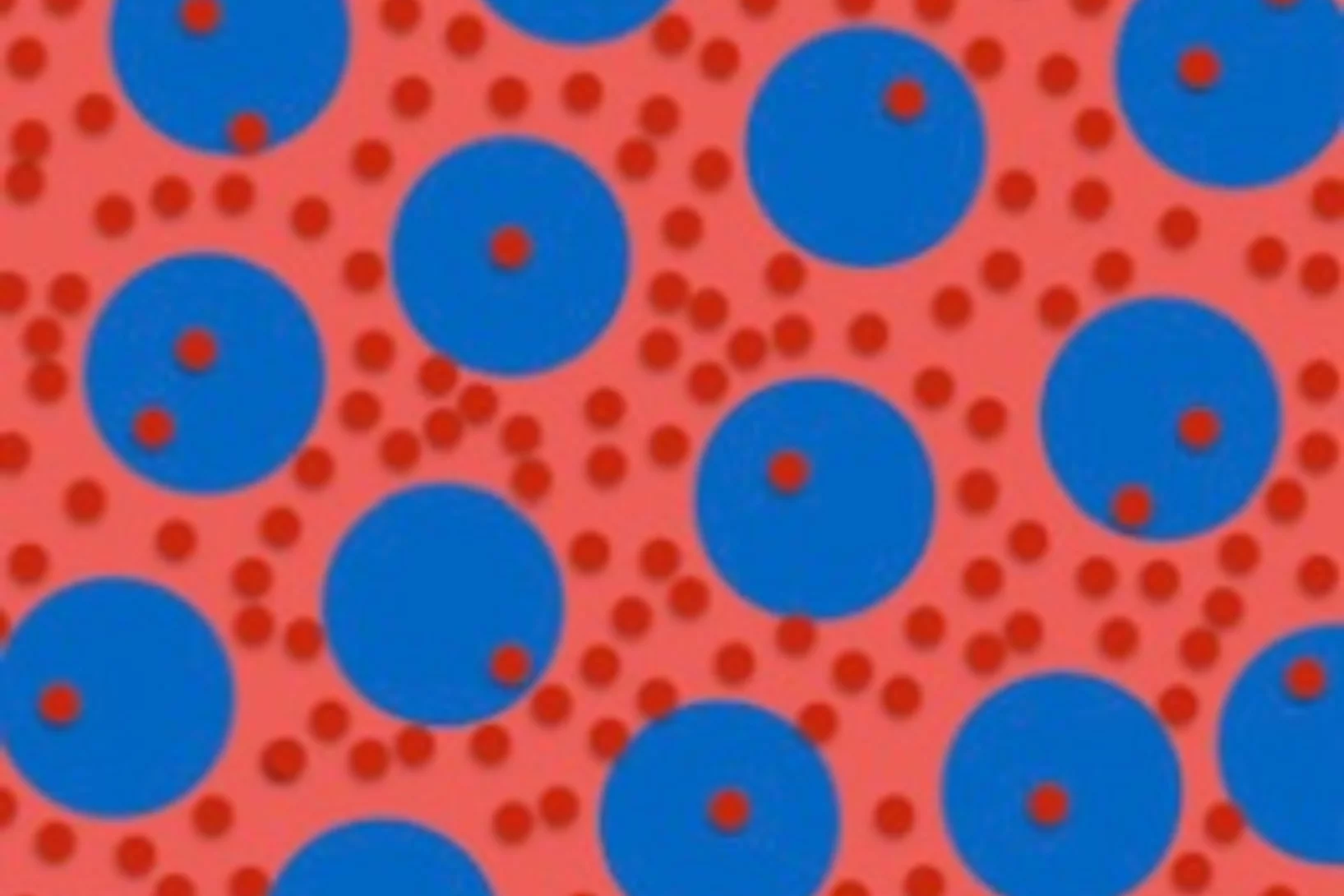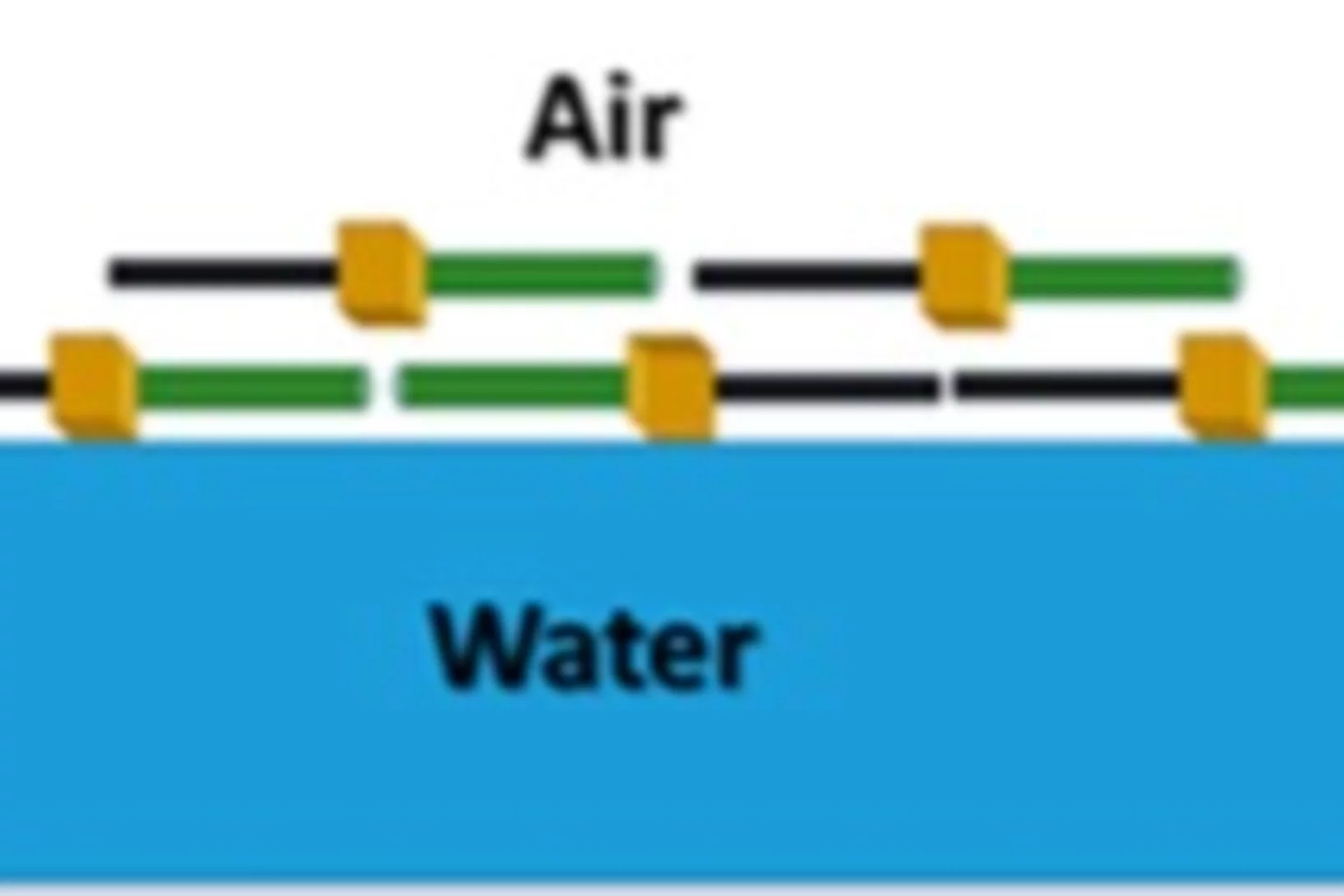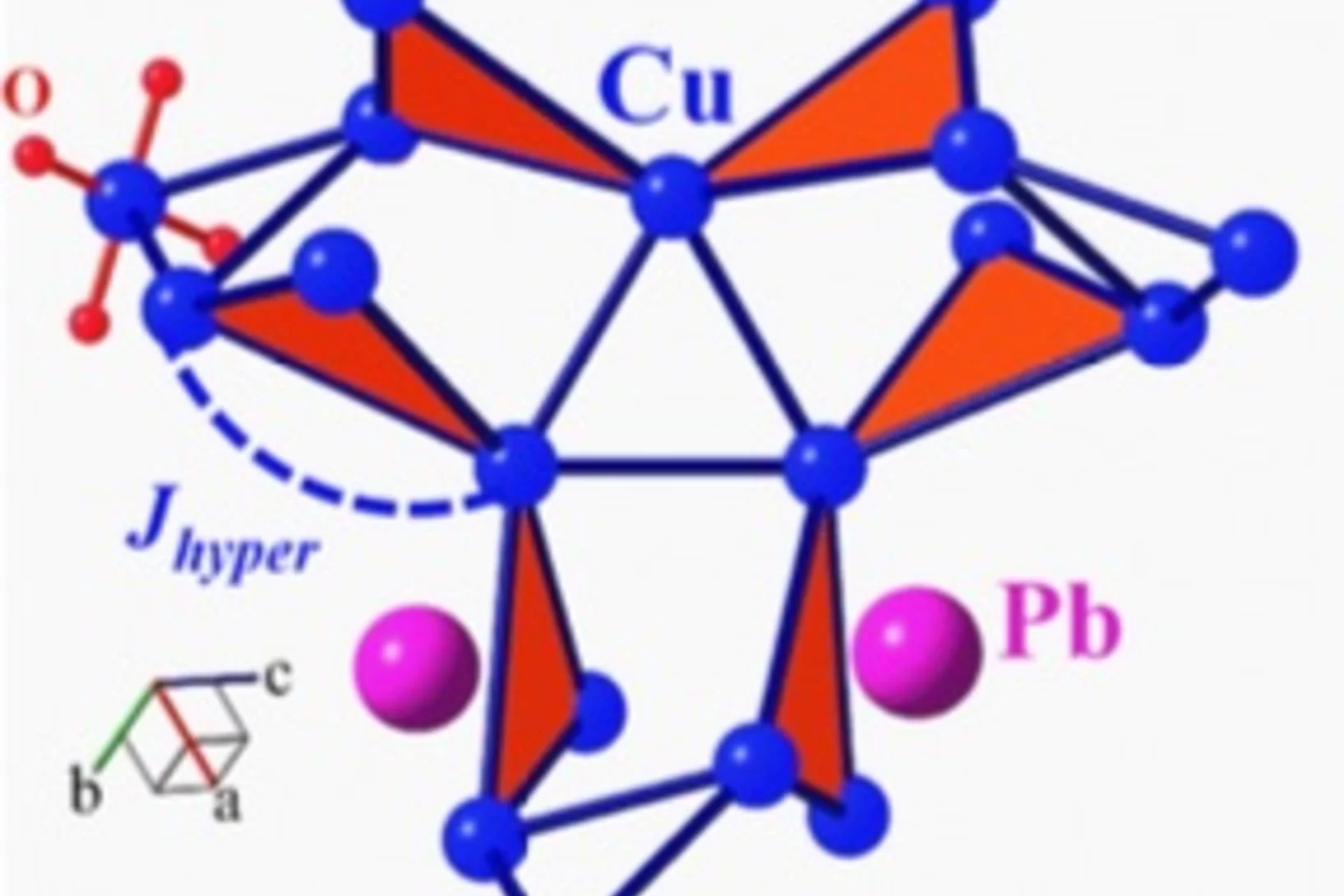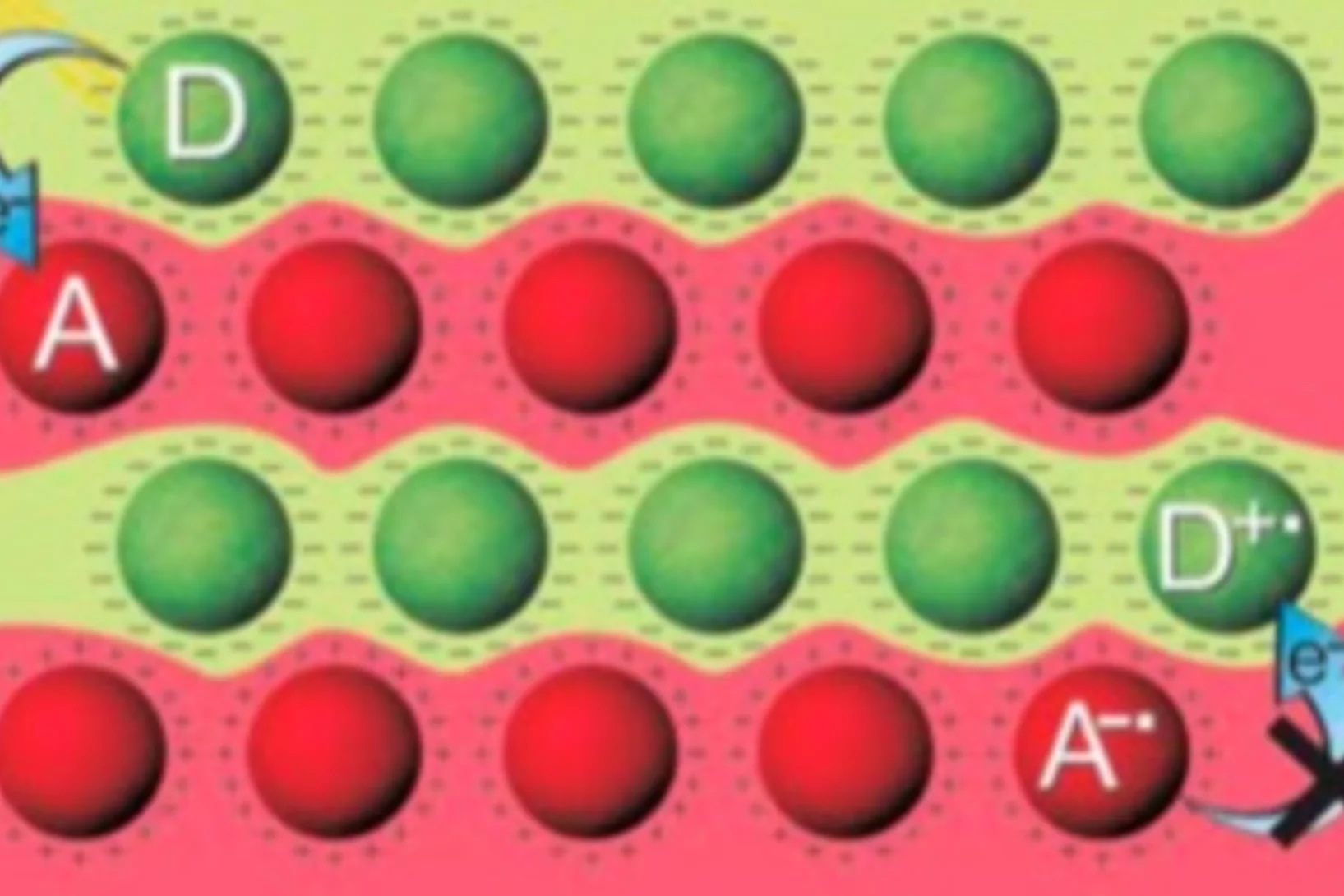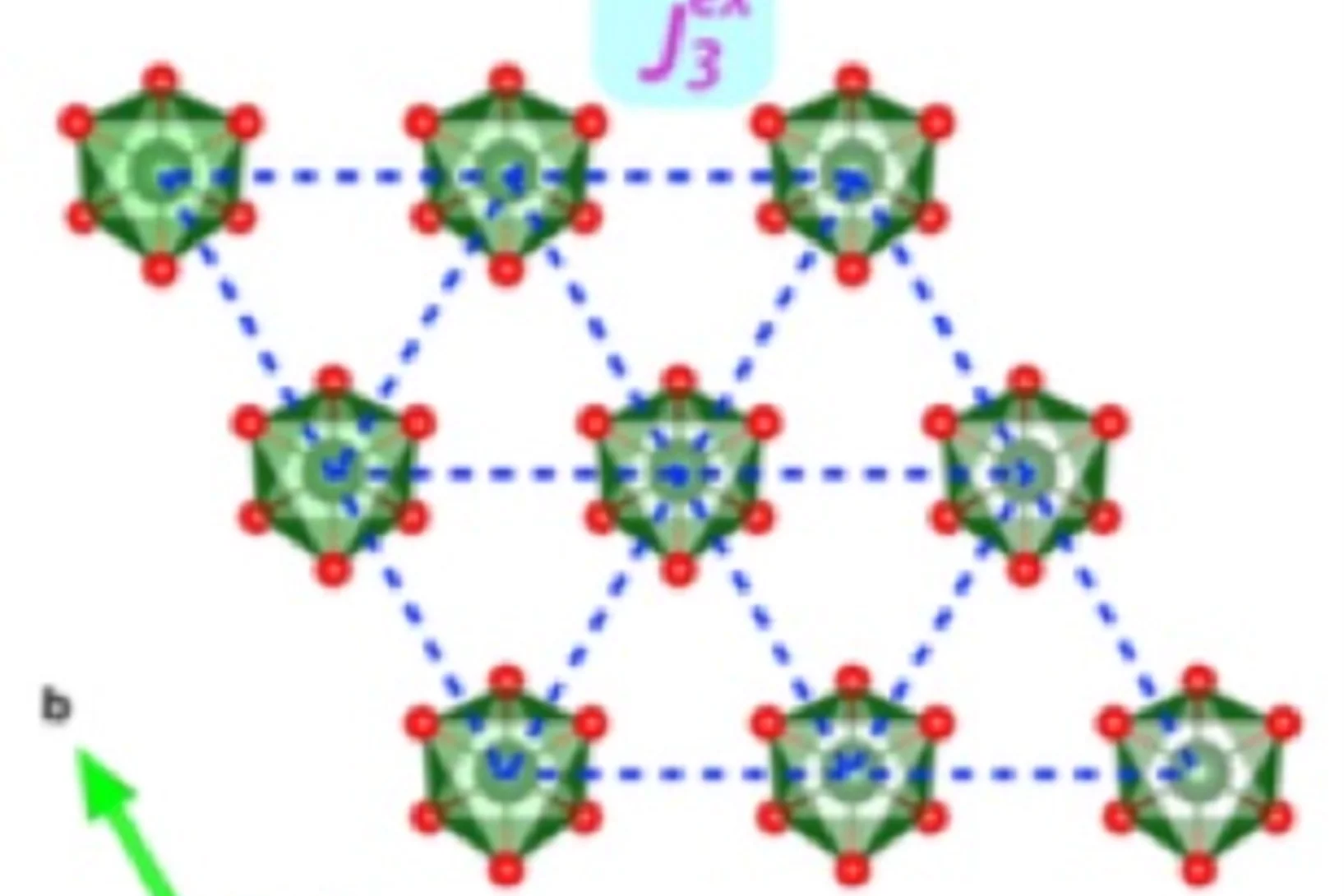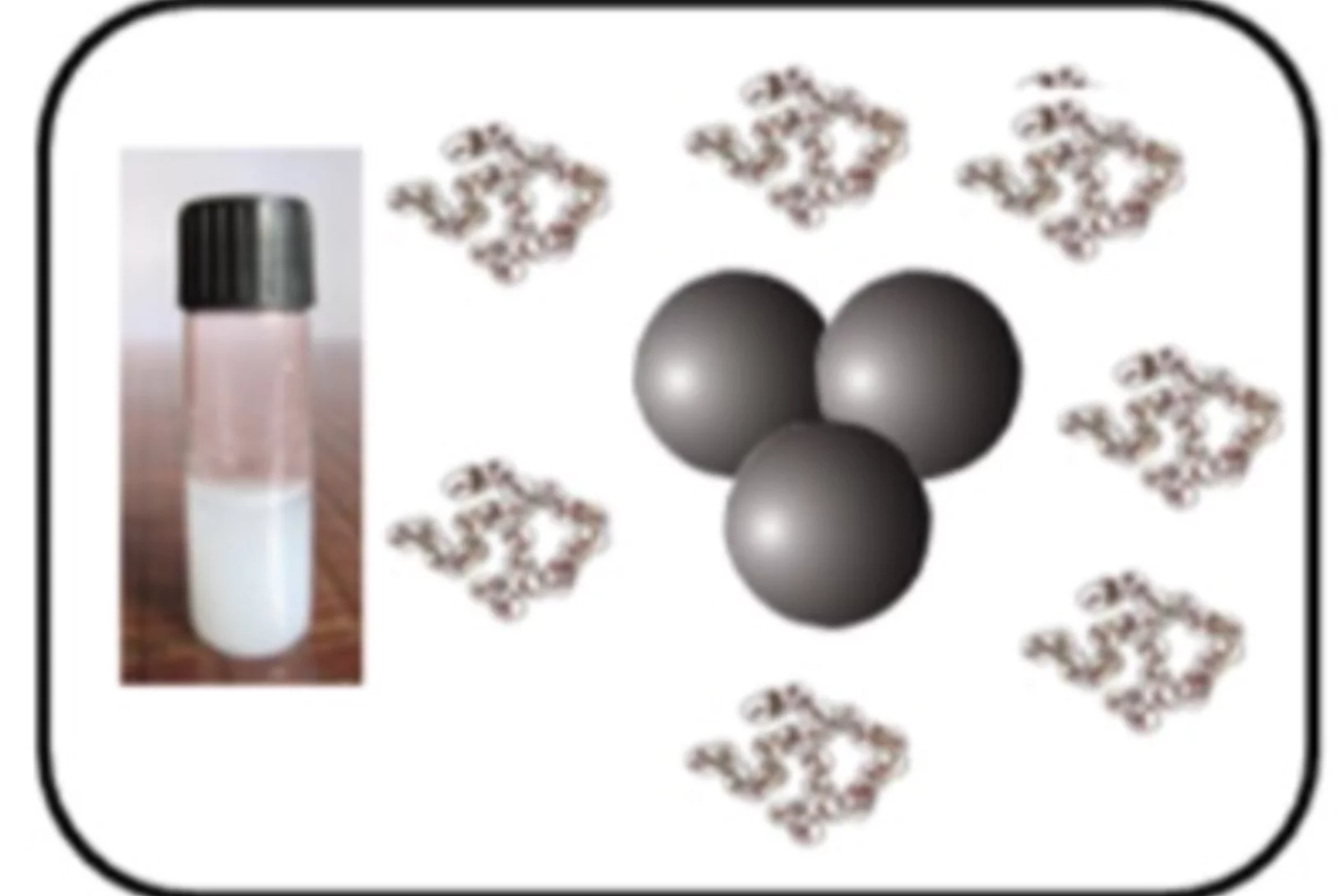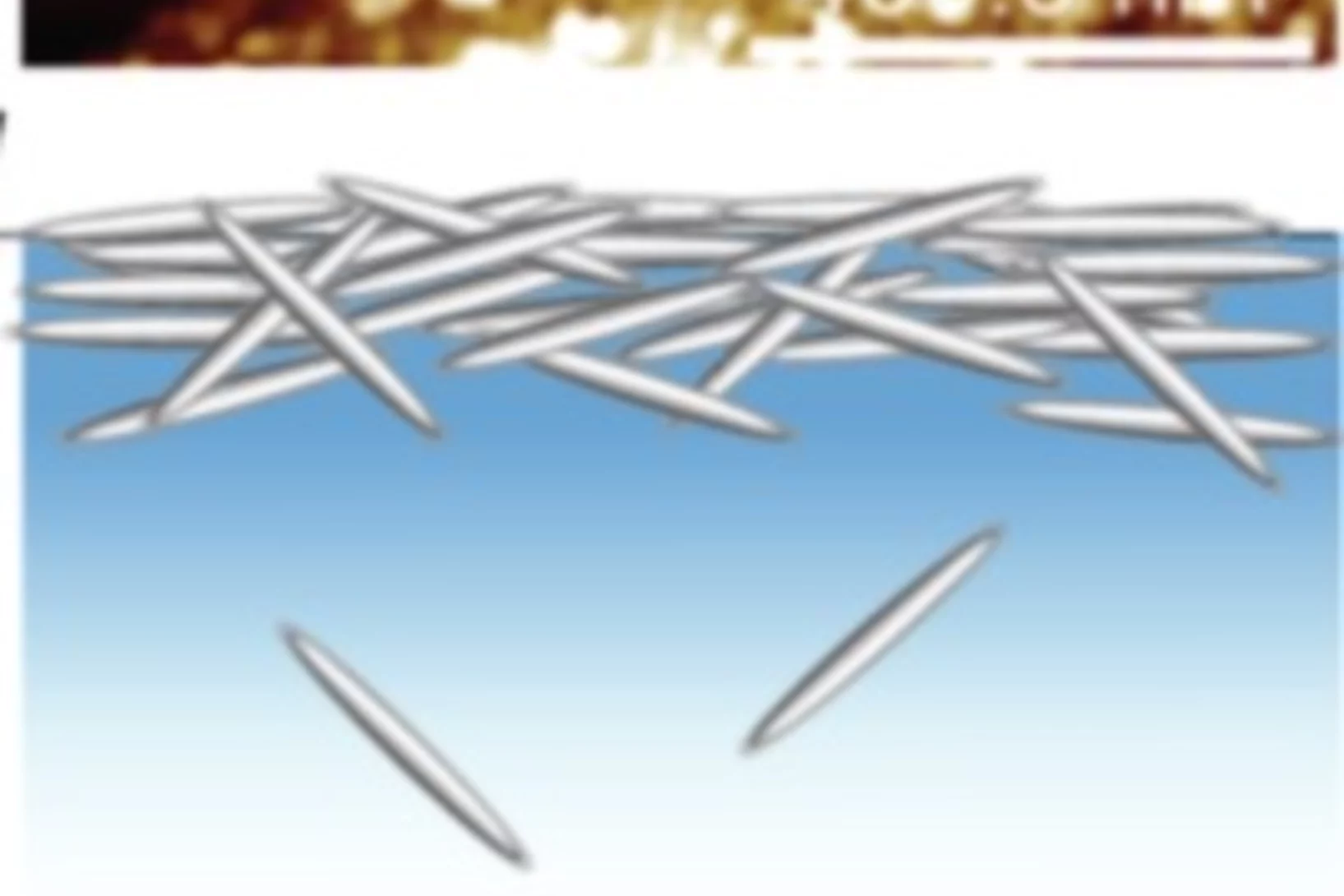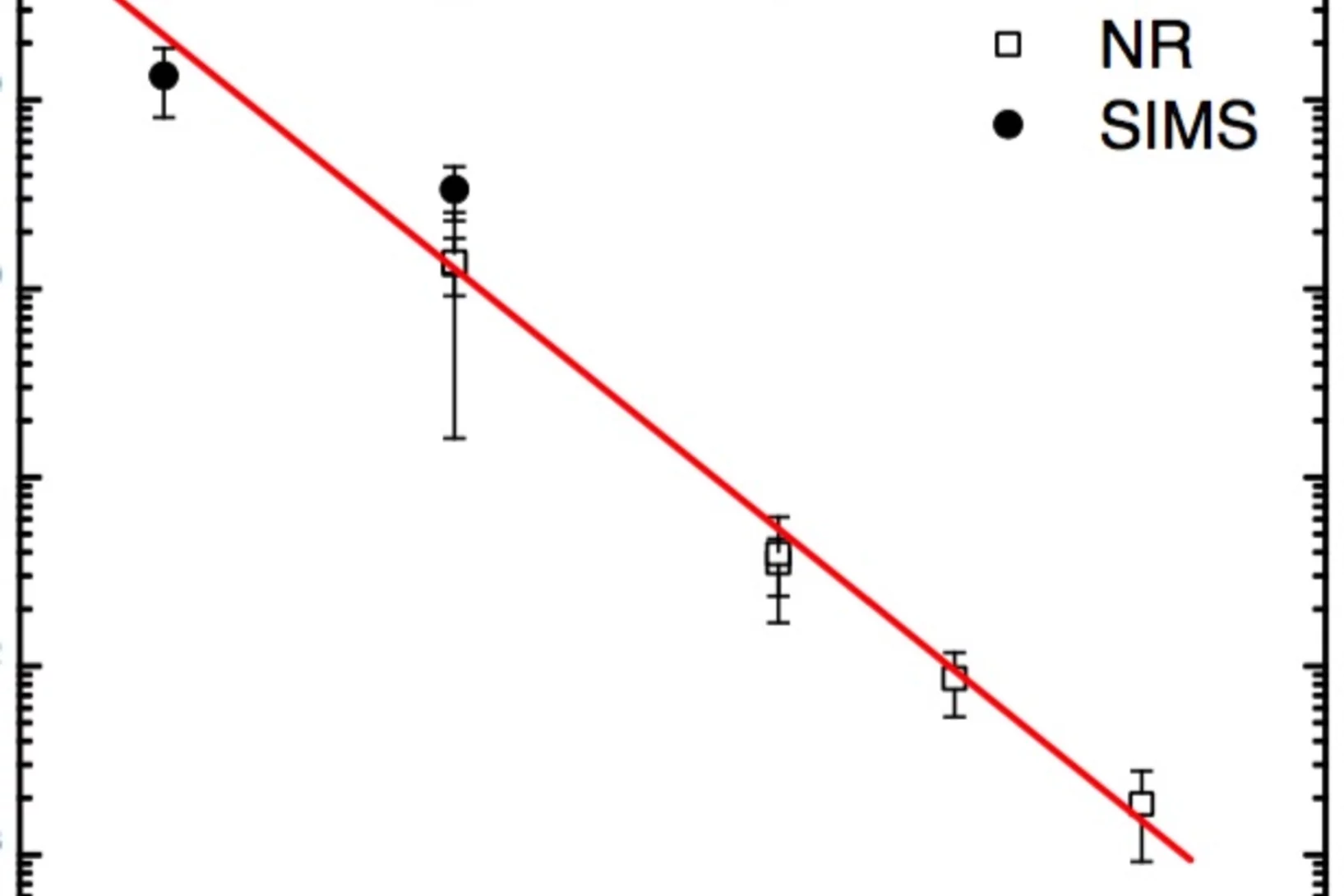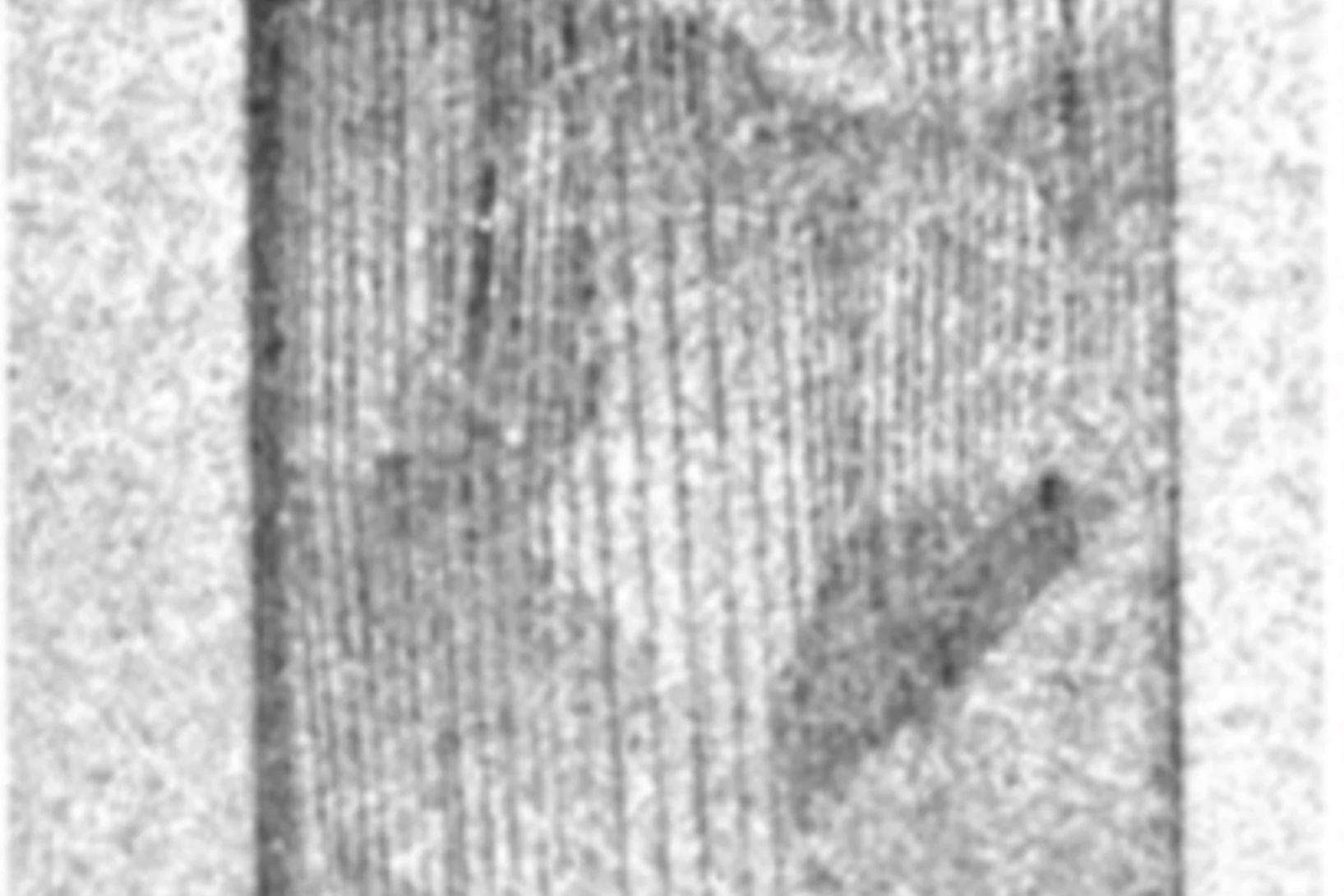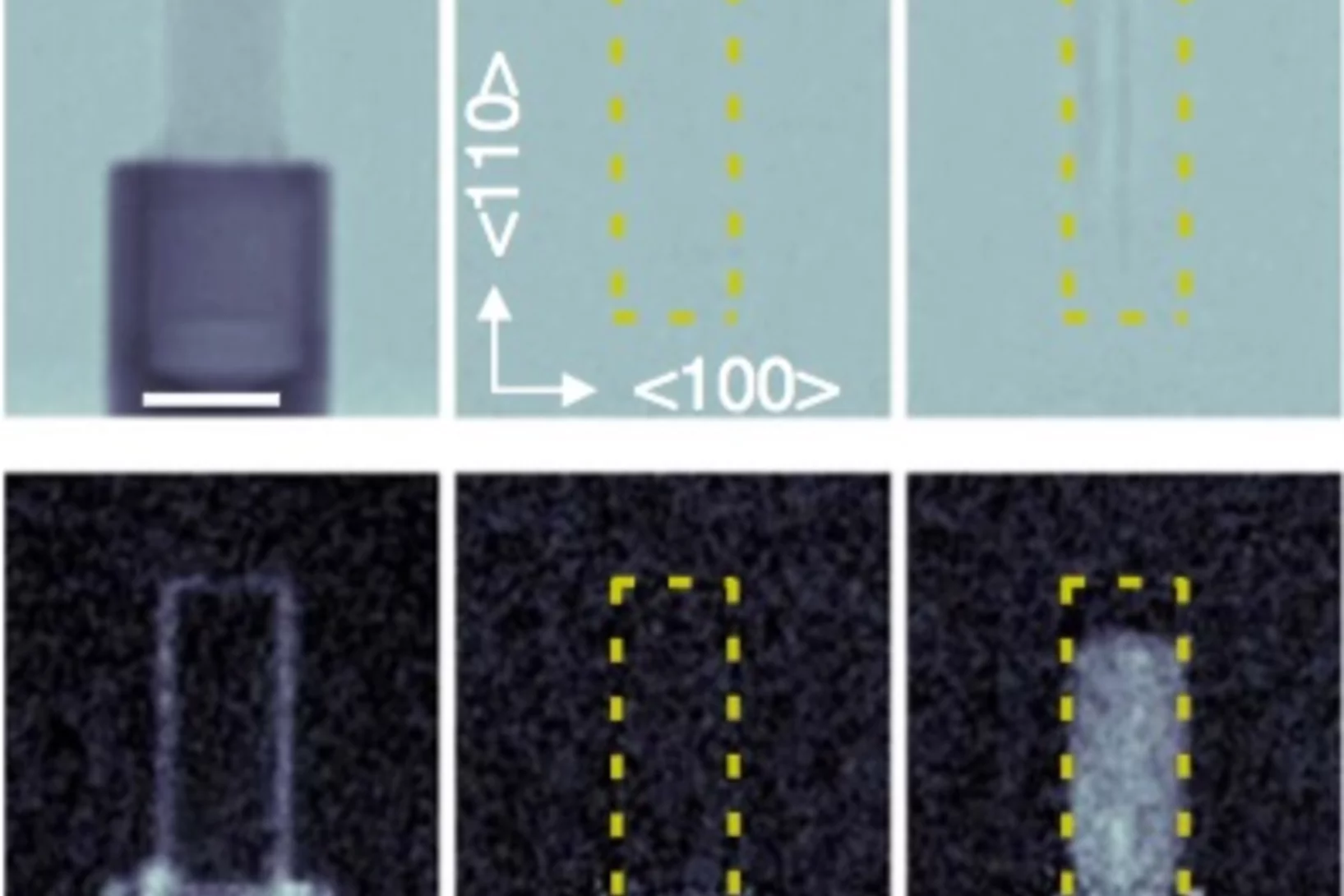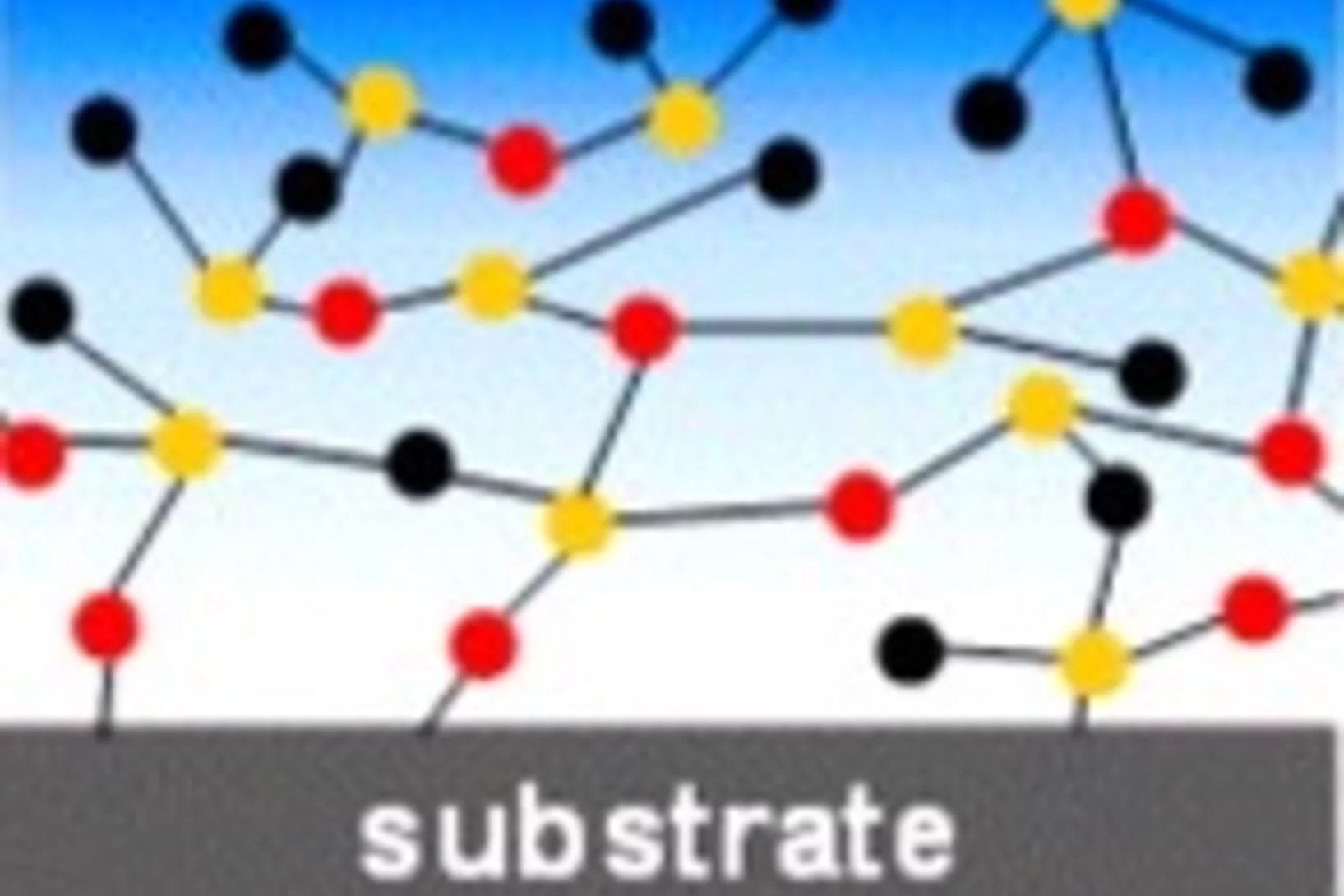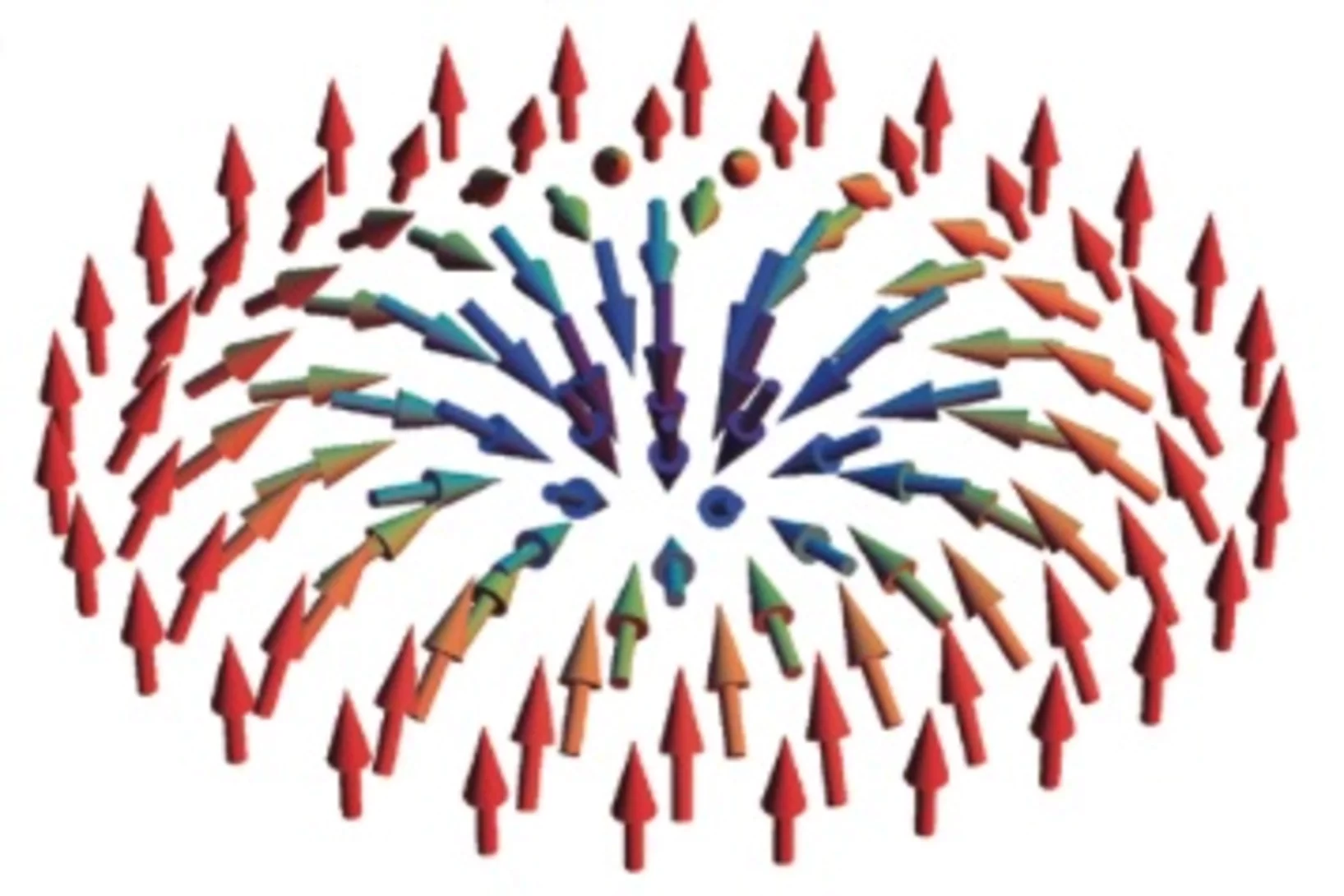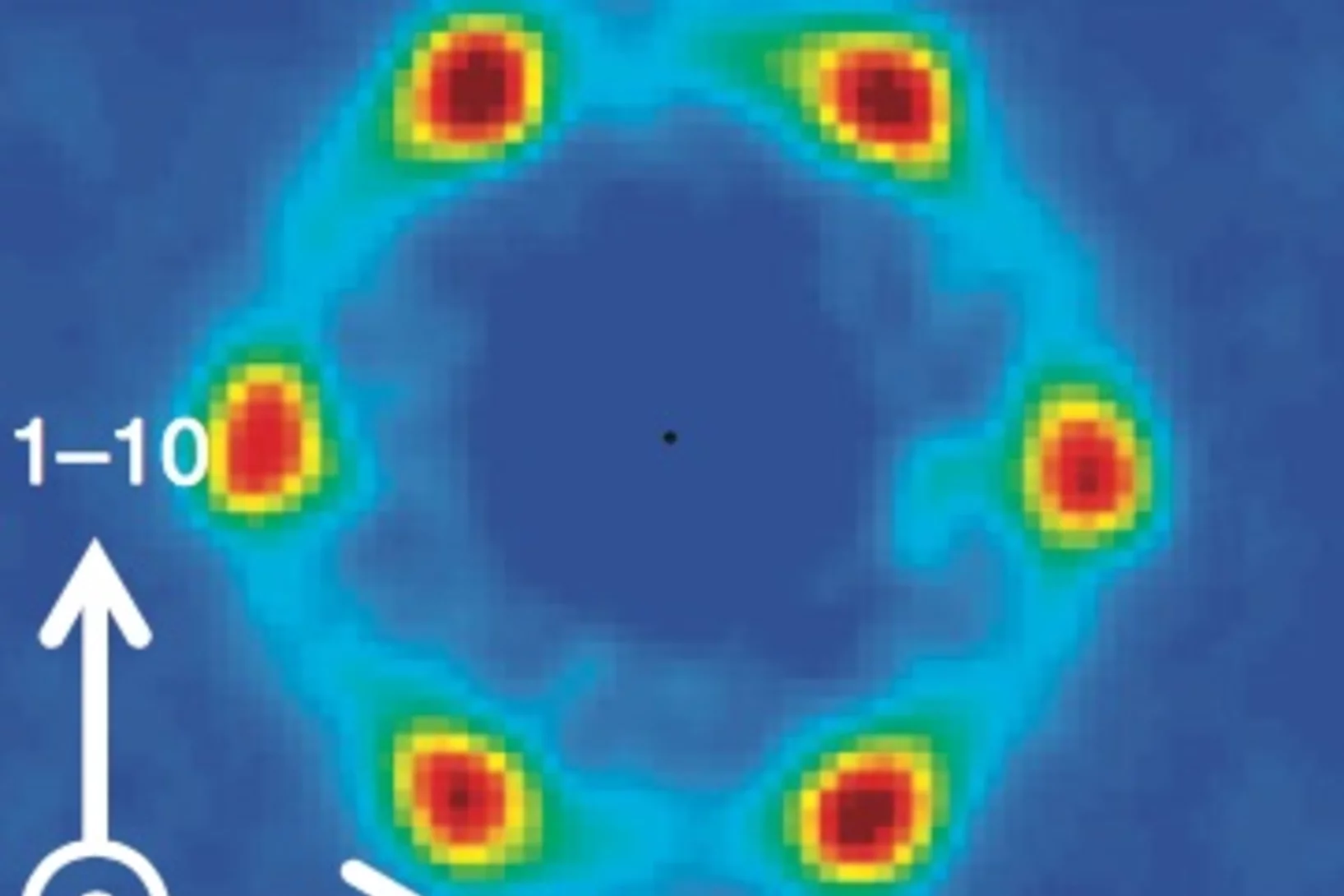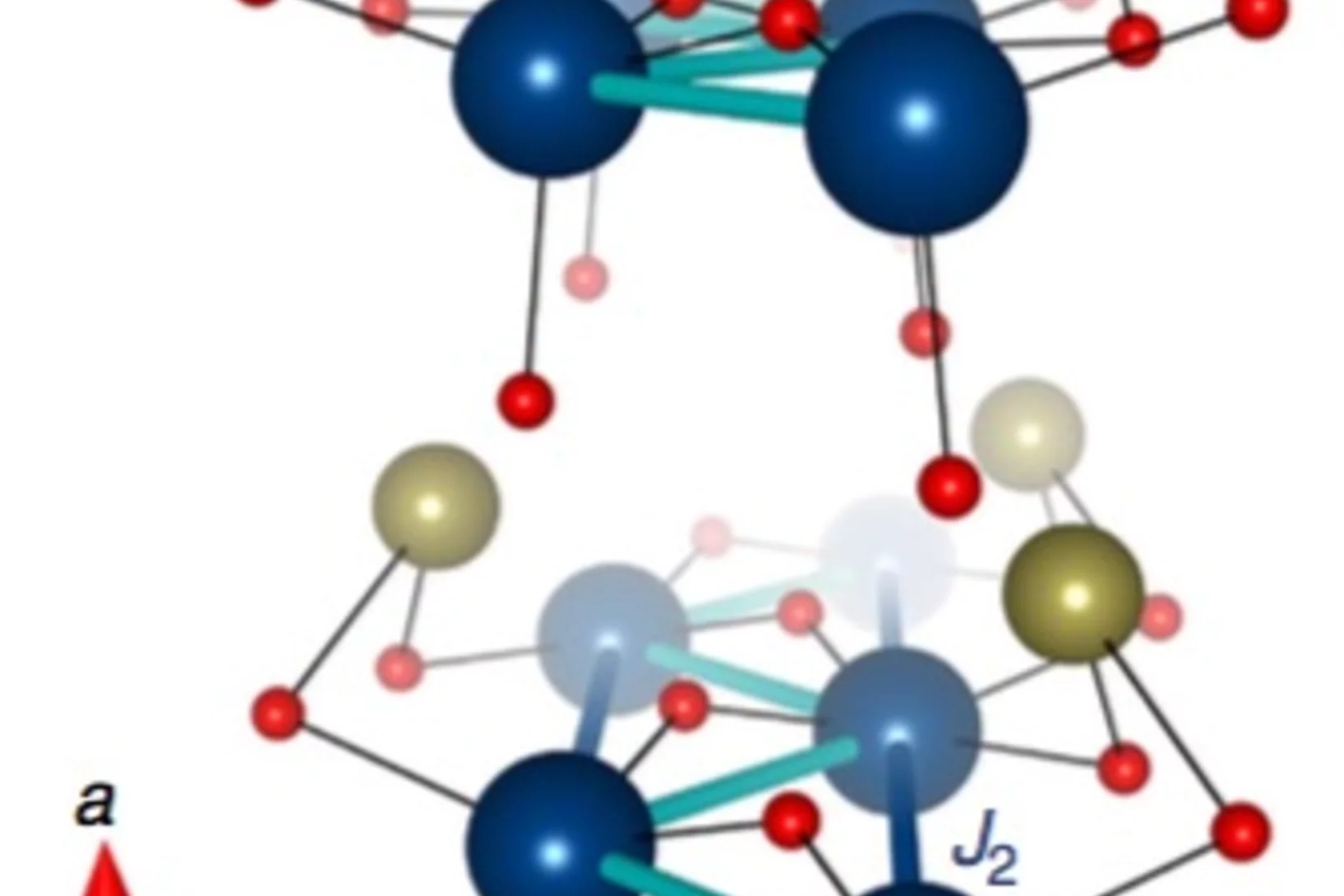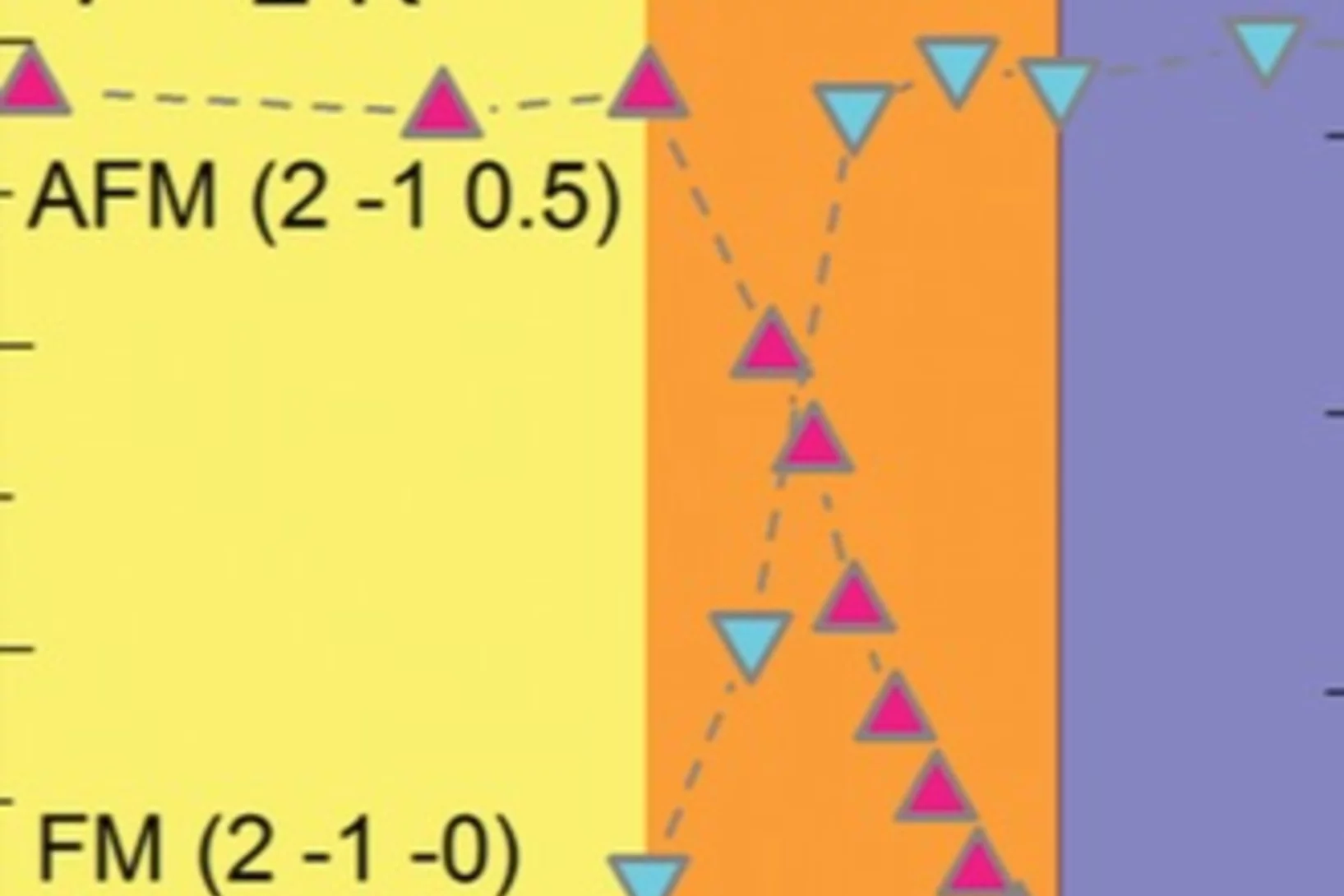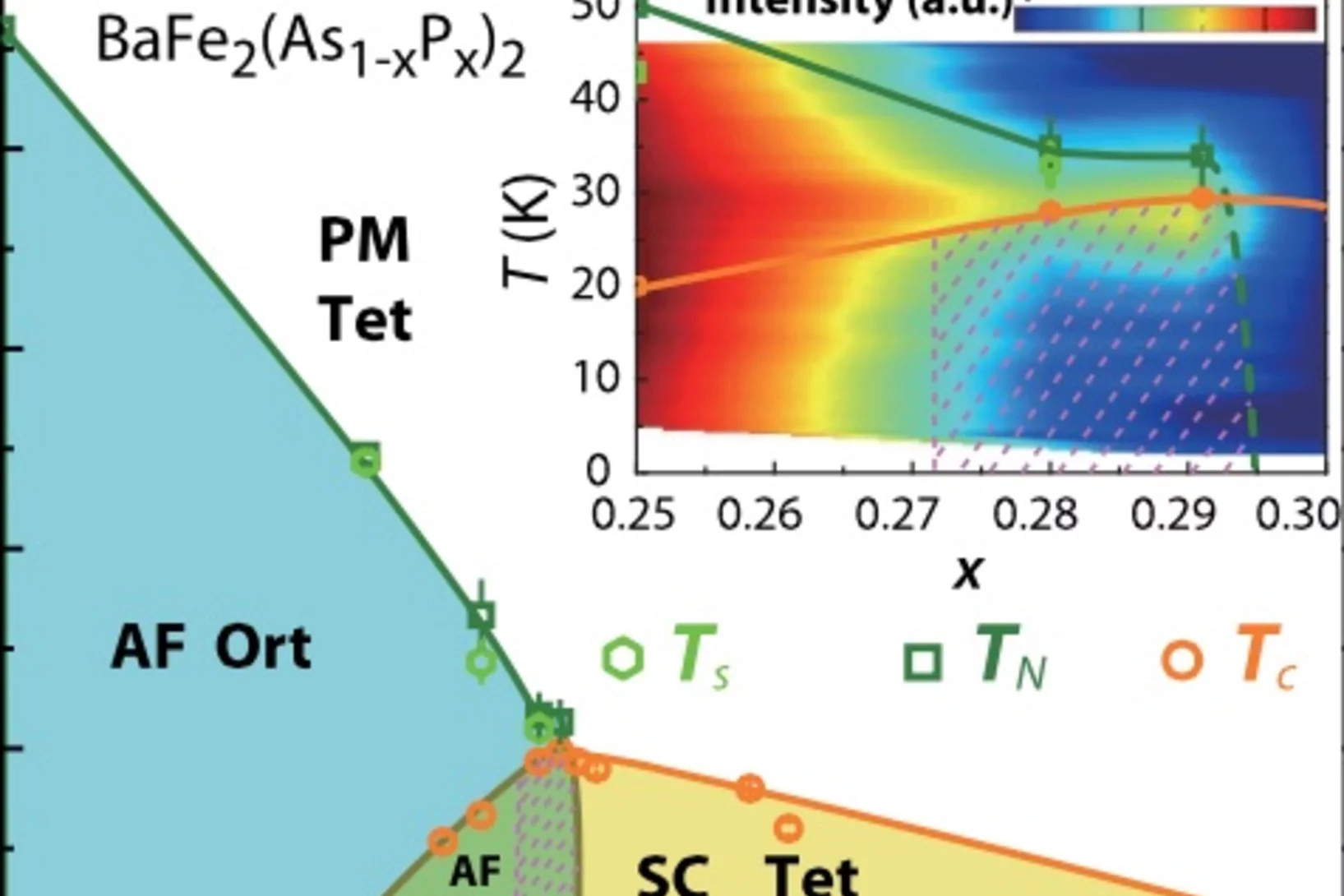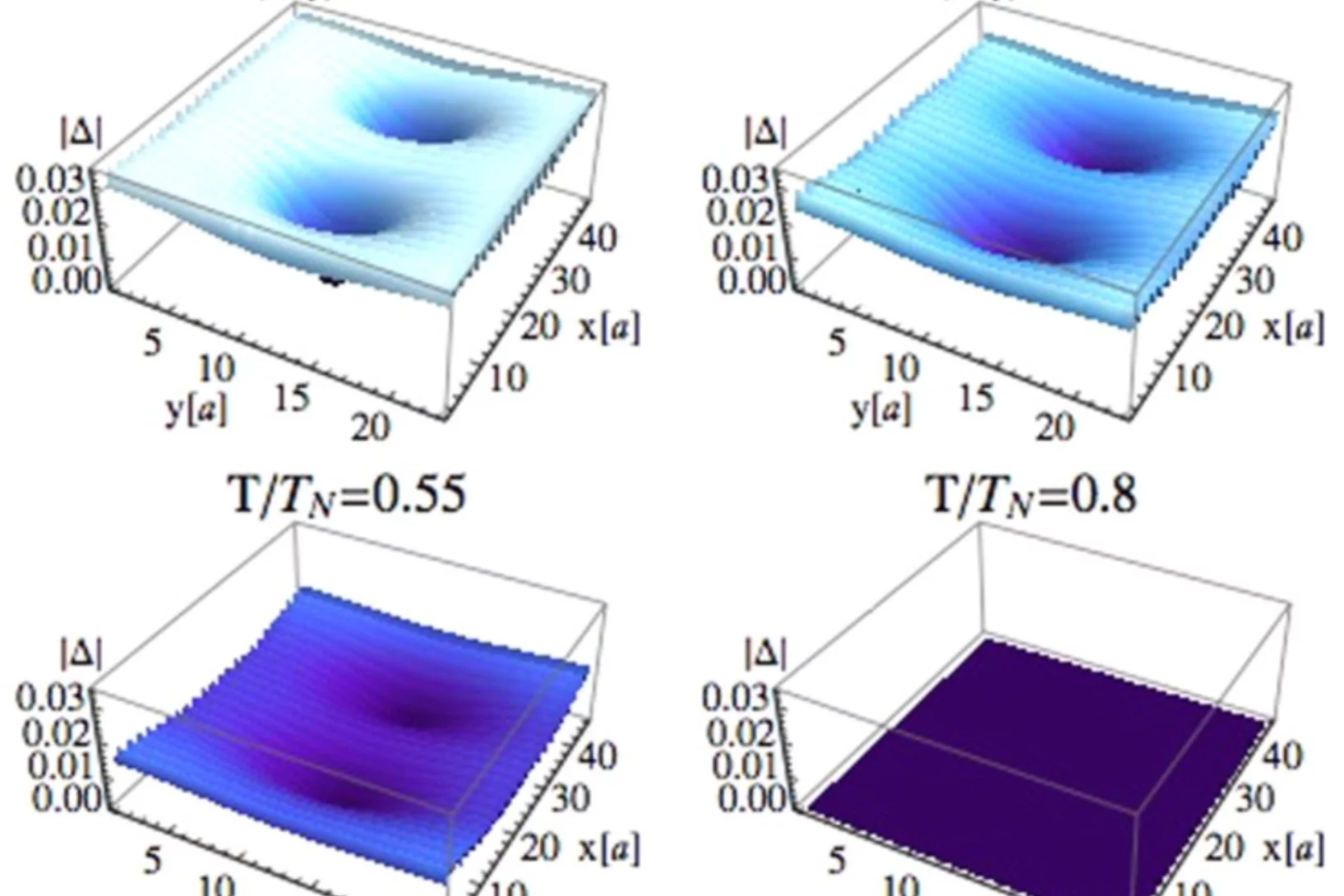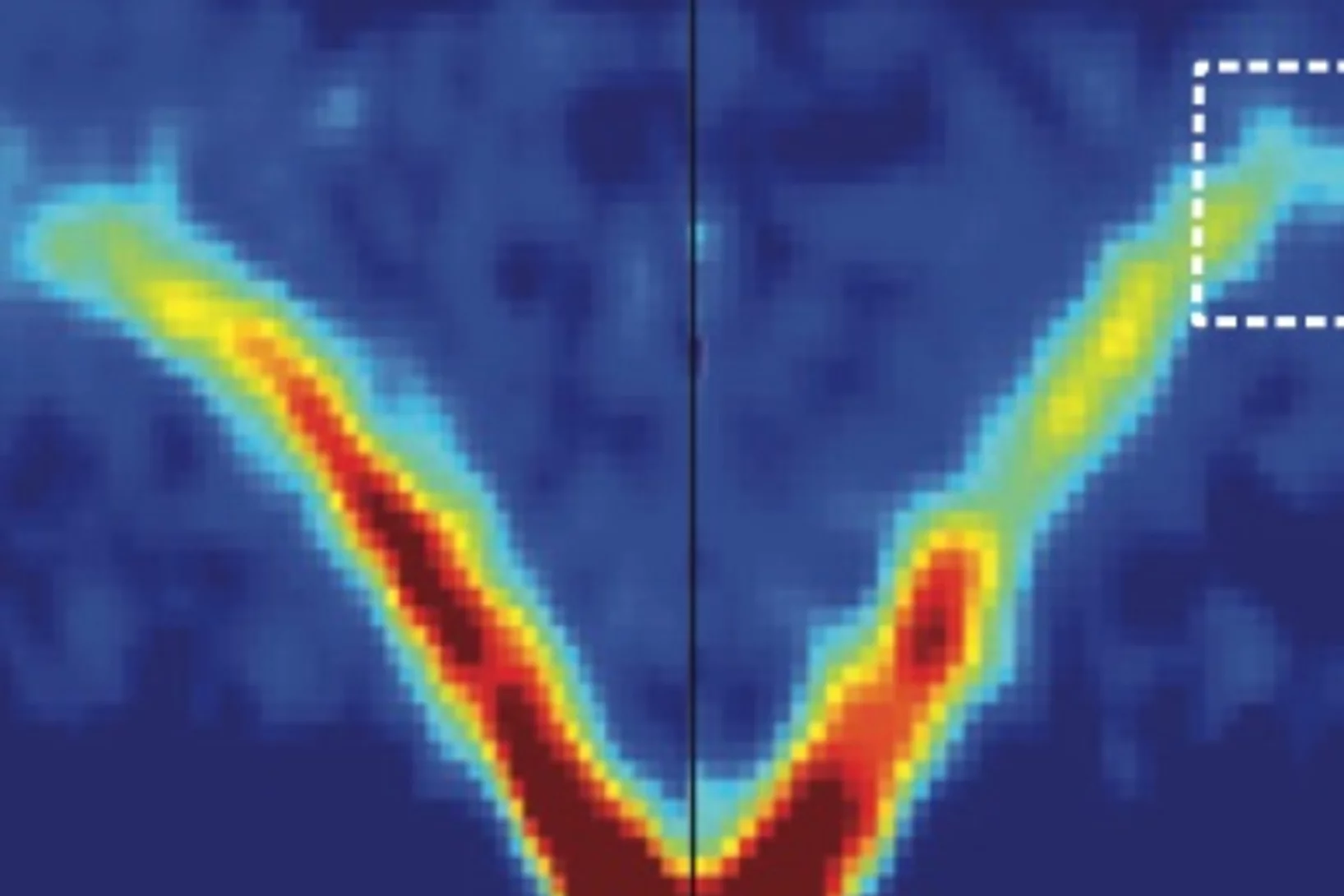Dimensional Reduction in Quantum Dipolar Antiferromagnets
We report ac susceptibility, specific heat, and neutron scattering measurements on a dipolar-coupled antiferromagnet LiYbF4. For the thermal transition, the order-parameter critical exponent is found to be 0.20(1) and the specific-heat critical exponent −0.25(1). The exponents agree with the 2D XY/h4 universality class despite the lack of apparent two-dimensionality in the structure.
The role of ions in the self-healing behavior of soft particle suspensions
Understanding when a material crystallizes is of fundamental importance in condensed matter. In many materials, the presence of point defects suppresses crystallization. Surprisingly, colloidal hydrogels can overcome this limitation: A small number of large microgels can spontaneously deswell to fit in the crystal lattice of smaller microgels, thus avoiding the occurrence of point defects.
Semifluorinated Alkanes at the Air–Water Interface: Tailoring Structure and Rheology at the Molecular Scale
Semifluorinated alkanes form monolayers with interesting properties at the air–water interface due to their pronounced amphi-solvophobic nature and the stiffness of the fluorocarbons. In the present work, using a combination of structural and dynamic probes, we investigated how small molecular changes can be used to control the properties of such an interface, in particular its organization, rheology, and reversibility during compression–expansion cycles.
Spin Liquid State in the 3D Frustrated Antiferromagnet PbCuTe2O6: NMR and Muon Spin Relaxation Studies
PbCuTe2O6 is a rare example of a spin liquid candidate featuring a three-dimensional magnetic lattice. Strong geometric frustration arises from the dominant antiferromagnetic interaction that generates a hyperkagome network of Cu2+ ions although additional interactions enhance the magnetic lattice connectivity.
Stratified Micellar Multilayers - Toward Nanostructured Photoreactors
Polyelectrolyte multilayers (PEMs) with stratification of the internal structure were assembled from statistical amphiphilic copolyelectrolytes of opposite charges. These polyelectrolytes organize in aqueous solutions into micellar structures with fluoroalkyl and aromatic nanodomains, respectively, that were also preserved after deposition as thin films via layer-by-layer (LbL) electrostatic self-assembly.
Origin of the Spin-Orbital Liquid State in a Nearly J=0 Iridate Ba3ZnIr2O9
We show using detailed magnetic and thermodynamic studies and theoretical calculations that the ground state of Ba3ZnIr2O9 is a realization of a novel spin-orbital liquid state. Our results reveal that Ba3ZnIr2O9 with Ir5+ (5d4) ions and strong spin-orbit coupling (SOC) arrives very close to the elusive J 1⁄4 0 state but each Ir ion still possesses a weak moment.
Small-Angle Neutron Scattering Study of Interplay of Attractive and Repulsive Interactions in Nanoparticle-Polymer System
The phase behavior of nanoparticle (silica)−polymer (polyethylene glycol) system without and with an electrolyte (NaCl) has been studied. It is observed that nanoparticle−polymer system behaves very differently in the presence of electrolyte. In the absence of electrolyte, the nanoparticle−polymer system remains in one-phase even at very high polymer concentrations.
Mechanically Enhanced Liquid Interfaces at Human Body Temperature Using Thermosensitive Methylated Nanocrystalline Cellulose
The mechanical performance of materials at oil/water interfaces after consumption is a key factor affecting hydrophobic drug release. In this study, we methylated the surface of nanocrystalline cellulose (NCC) by mercerization and dimethyl sulfate exposure to produce thermosensitive biopolymers. These methylated NCC (metNCC) were used to investigate interfacial thermogelation at air/water and medium-chain triglyceride (MCT)/water interfaces at body temperature.
Self-Diffusion in Amorphous Silicon
The present Letter reports on self-diffusion in amorphous silicon. Experiments were done on 29Si/natSi heterostructures using neutron reflectometry and secondary ion mass spectrometry. The diffusivities follow the Arrhenius law in the temperature range between 550 and 700°C with an activation energy of (4.4 ± 0.3) eV.
In-situ visualization of stress-dependent bulk magnetic domain formation by neutron grating interferometry
The performance and degree of efficiency of industrial transformers are directly influenced by the magnetic properties of high-permeability steel laminations (HPSLs). Industrial transformer cores are built of stacks of single HPSLs. While the insulating coating on each HPSL reduces eddy-current losses in the transformer core, the coating also induces favorable inter-granular tensile stresses that significantly influence the underlying magnetic domain structure.
Visualizing the morphology of vortex lattice domains in a bulk type-II superconductor
Alike materials in the solid state, the phase diagram of type-II superconductors exhibit crystalline, amorphous, liquid and spatially inhomogeneous phases. The multitude of different phases of vortex matter has thence proven to act as almost ideal model system for the study of both the underlying properties of superconductivity but also of general phenomena such as domain nucleation and morphology.
Response of Plasma-Polymerized Hexamethyldisiloxane Films to Aqueous Environments
Thin plasma polymer films were deposited in hexamethyldisiloxane (HMDSO) and HMDSO/O2 low-pressure discharges and their chemical structures analyzed using infrared (IR) spectroscopy and neutron reflectometry (NR). The (plasma-polymerized) ppHMDSO film exhibits hydrophobic, poly(dimethylsiloxane)-like properties, while the retention of carbon groups is reduced by O2 addition, yielding a more inorganic, hydrophilic ppSiOx film.
Néel-type skyrmion lattice with confined orientation in the polar magnetic semiconductor GaV4S8
Following the early prediction of the skyrmion lattice (SkL) - a periodic array of spin vortices - it has been observed recently in various magnetic crystals mostly with chiral structure. Although non-chiral but polar crystals with Cnv symmetry were identified as ideal SkL hosts in pioneering theoretical studies, this archetype of SkL has remained experimentally unexplored.
Candidate Quantum Spin Liquid in the Ce3+ Pyrochlore Stannate Ce2Sn2O7
We report the low-temperature magnetic properties of Ce2Sn2O7, a rare-earth pyrochlore. Our suscep- tibility and magnetization measurements show that due to the thermal isolation of a Kramers doublet ground state, Ce2Sn2O7 has Ising-like magnetic moments of ∼1.18 μB. The magnetic moments are confined to the local trigonal axes, as in a spin ice, but the exchange interactions are antiferromagnetic.
A new class of chiral materials hosting magnetic skyrmions beyond room temperature
Skyrmions, topologically protected vortex-like nanometric spin textures in magnets, have been attracting increasing attention for emergent electromagnetic responses and possible technological applications for spintronics. In particular, metallic magnets with chiral and cubic/tetragonal crystal structure may have high potential to host skyrmions that can be driven by low electrical current excitation.
Spin-stripe phase in a frustrated zigzag spin-1/2 chain
Motifs of periodic modulations are encountered in a variety of natural systems, where at least two rival states are present. In strongly correlated electron systems, such behaviour has typically been associated with competition between short- and long-range interactions, for example, between exchange and dipole-dipole interactions in the case of ferromagnetic thin films.
Controllable Broadband Absorption in the Mixed Phase of Metamagnets
Materials with broad absorption bands are highly desirable for electromagnetic filtering and processing applications, especially if the absorption can be externally controlled. Here, a new class of broadband-absorption materials is introduced. Namely, layered metamagnets exhibit an electromagnetic excitation continuum in the magnetic-field-induced mixed ferro- and antiferromagnetic phase.
Structural and Magnetic Phase Transitions near Optimal Superconductivity in BaFe2(As1-xPx)2
We use nuclear magnetic resonance (NMR), high-resolution x-ray, and neutron scattering studies to study structural and magnetic phase transitions in phosphorus-doped BaFe2(As1-xPx)2. Previous transport, NMR, specific heat, and magnetic penetration depth measurements have provided compelling evidence for the presence of a quantum critical point (QCP) near optimal superconductivity at x=0.3.
Magnetic inhomogeneity on a triangular lattice: the magnetic-exchange versus the elastic energy and the role of disorder
Inhomogeneity in the ground state is an intriguing, emergent phenomenon in magnetism. Recently, it has been observed in the magnetostructural channel of the geometrically frustrated α-NaMnO2, for the first time in the absence of active charge degrees of freedom. Here we report an in-depth numerical and local-probe experimental study of the isostructural sister compound CuMnO2 that emphasizes and provides an explanation for the crucial differences between the two systems.
Competing superconducting and magnetic order parameters and field-induced magnetism in electron-doped Ba(Fe1-xCox)2As2
We have studied the magnetic and superconducting properties of Ba(Fe0.95Co0.05)2As2 as a function of temperature and external magnetic field using neutron scattering and muon spin rotation. Below the superconducting transition temperature the magnetic and superconducting order parameters coexist and compete. A magnetic field can significantly enhance the magnetic scattering in the superconducting state, roughly doubling the Bragg intensity at 13.5T.
Fractional excitations in the square-lattice quantum antiferromagnet
Quantum magnets have occupied the fertile ground between many-body theory and low-temperature experiments on real materials since the early days of quantum mechanics. However, our understanding of even deceptively simple systems of interacting spin-1/2 particles is far from complete. The quantum square-lattice Heisenberg antiferromagnet, for example, exhibits a striking anomaly of hitherto unknown origin in its magnetic excitation spectrum.
